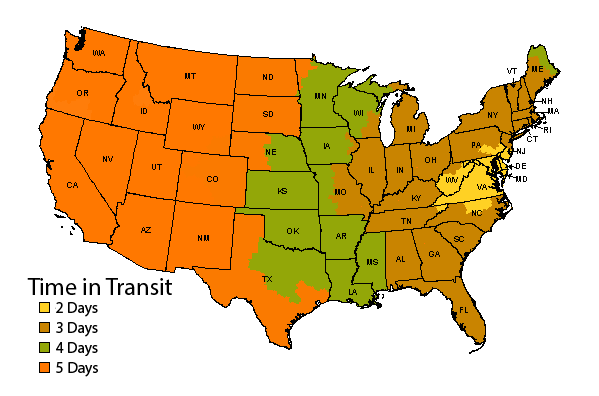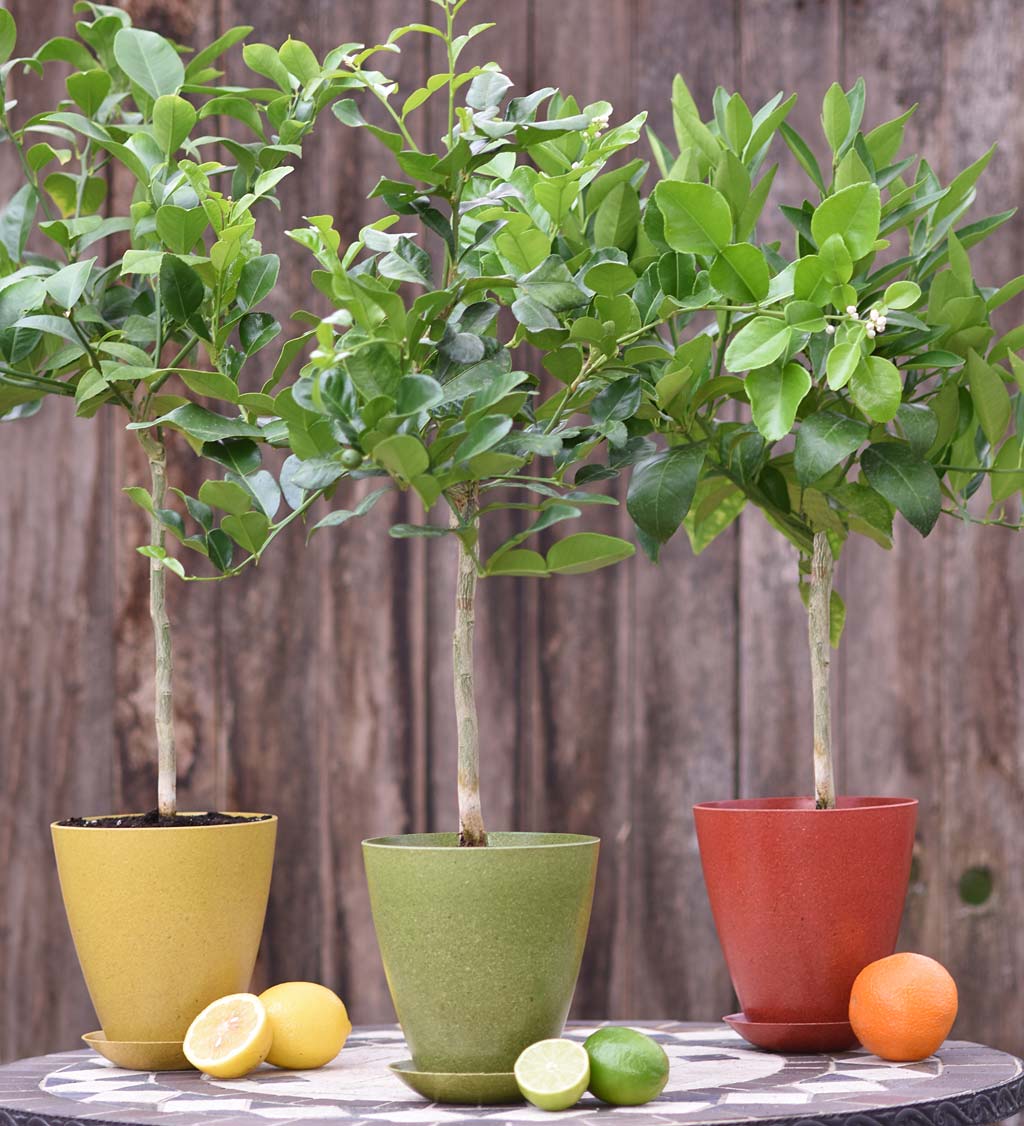Please note: Potted Citrus Trees cannot be shipped to California, Arizona, Florida or Texas due to individual state regulations.
Sweet and zesty citrus scents and flavors are the best part of our warmer seasons! Bring some of the natural goodness home with one of our mini patio citrus trees, available in Meyer Lemon, Moro Blood Orange, and Kaffir Lime. Every tree is grown right here in the USA and ships to you in a rice hull pot!
Meyer Lemon- The Meyer Lemon is believed to be a cross between a true lemon and either a mandarin or an orange. It originated in China and was brought to the USA in 1908 by Frank Meyer, a USDA employee working as a plant collector. Sweeter and less acidic than a standard lemon, the Meyer lemon is prized for its intense fragrance and complex flavor. The white flowers are fragrant and loved by bees.
Kaffir Lime- The Kaffir Lime (also known as the Makrut Lime) originated in tropical Asia and is used widely in the cuisine of the region. The leaves are an essential ingredient for many Southeast Asian dishes, adding an aromatic citrus note. The rind and juice are also used.
Blood Orange- The Moro Blood Orange has deep red flesh and a delicious flavor reminiscent of raspberries. The blood orange has been grown in the Southern Mediterranean since the 1700s but its origin is uncertain; it may have originated in China or in Southern Europe. In Sicily, the arancia rossa di Sicilia holds Protected Geographical Status from the EU. Juice from blood oranges is a deep red and the fruit is an eye-catching addition to any meal!
V2620,Miniature Potted Citrus Trees,fruit plants,fruit trees,dwarf citrus trees,dwarf potted citrus trees,dwarf fruit trees,miniature lemon trees,miniature lime trees,miniature orange trees,Miniature Potted lemon Trees,miniature Potted lime Trees,Miniature Potted orange Trees,gifts for gardeners,gardener gifts,house warming gifts,meyer lemon trees,meyer lemons,kitchen trees,kitchen plants,food producing plants,growing lemons,










